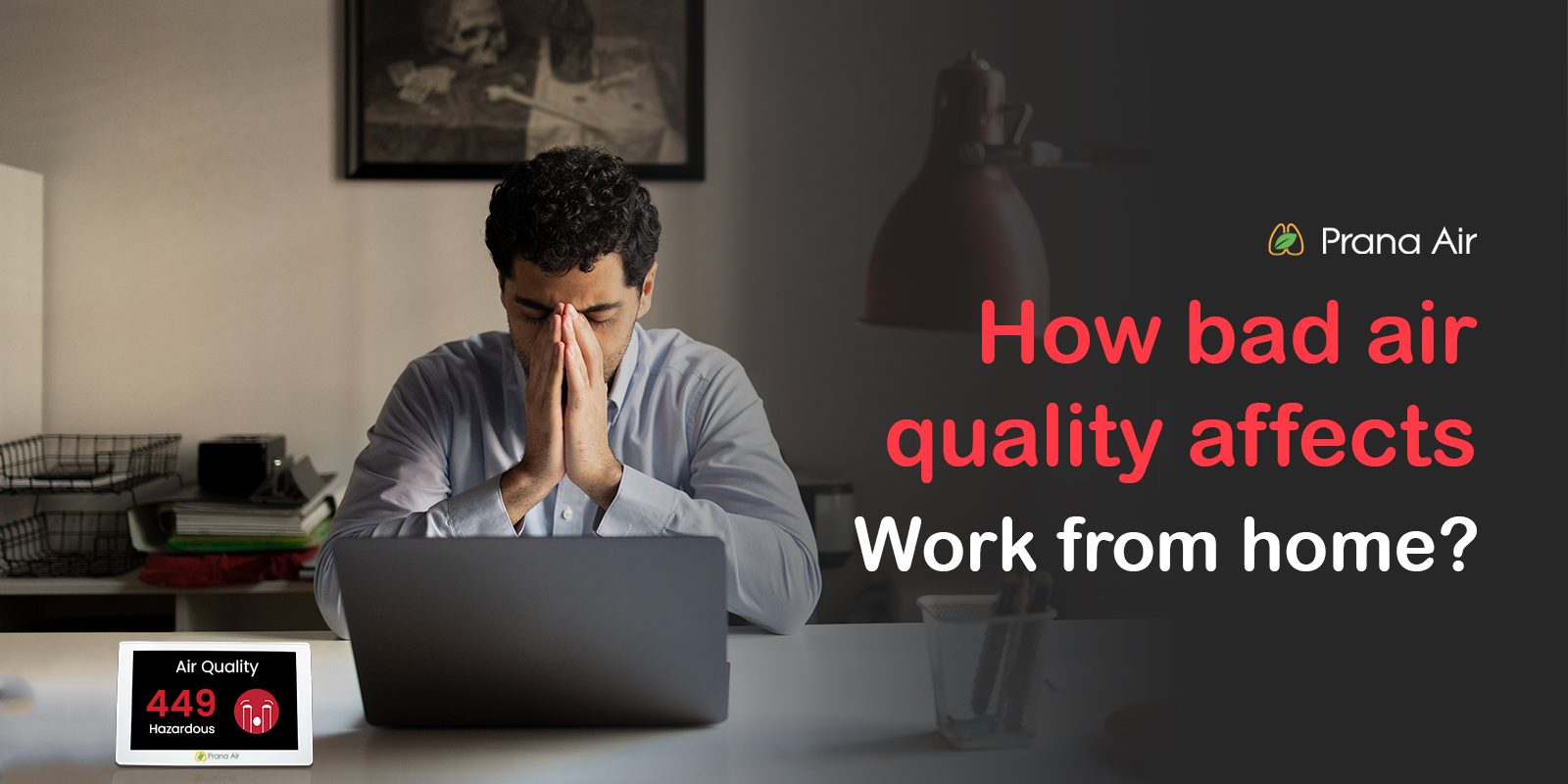Telecommuting, often known as working from home(WFH), is growing more and more common in India, especially in bigger cities like Delhi. Many businesses now give their employees the choice to work from home either full- or part-time. Both companies and employees may benefit from this, as it can cut costs for the business and improve employee flexibility and work-life balance. However, air quality significantly impacts productivity and health. Let’s find out more about how bad air quality affects work from home(WFH) experience.
Working models:
The best model to use depends on the unique requirements and objectives of the business and its employees while preserving the best possible indoor air quality. Each model has advantages and disadvantages of its own.
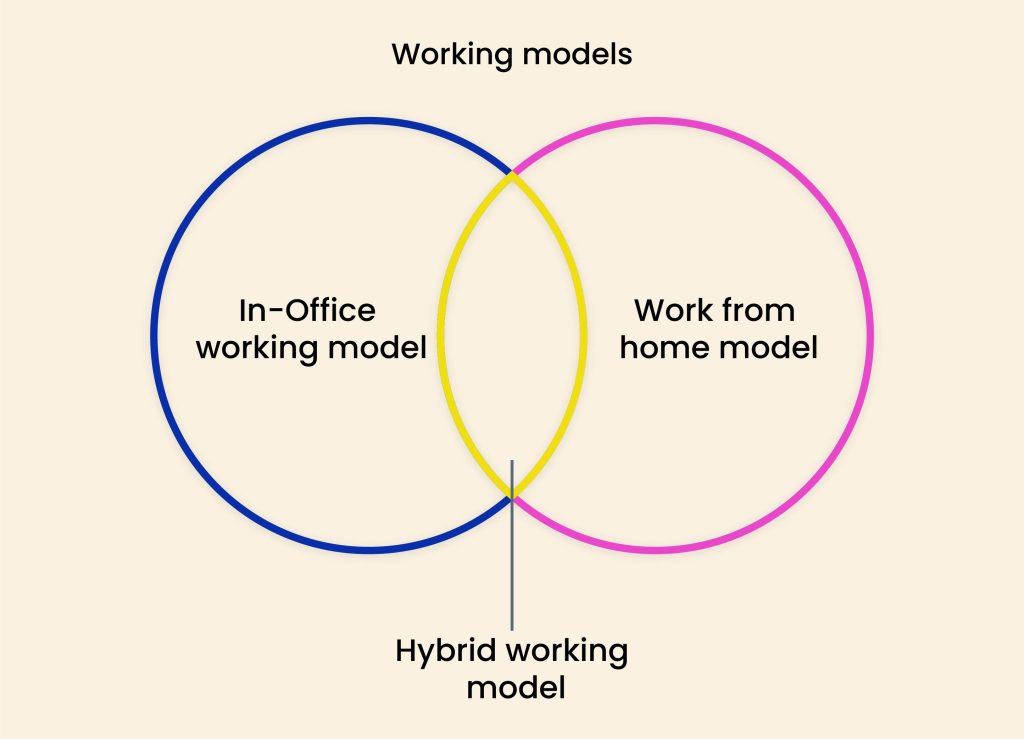
- Hybrid working model– A more recent model of work that combines in-person and remote labor is called hybrid work. Employees can choose to work from home or another remote location occasionally while also visiting the office or a physical workspace on particular days or for specific amounts of time under this arrangement. Due to the ability to balance the flexibility and autonomy of remote work with the social and collaborative advantages of in-person work, this can be advantageous for both companies and employees.
- Work from home model– Employees that work from home (telecommuting) carry out their job responsibilities from a distant location, such as their house. This paradigm is characterized by autonomy, flexibility, and the absence of a set workday. However many factors can influence the work productivity in a work from home scenario, such as air quality of that area, disturbance factors, etc.
Bad air quality affects work from home(WFH): Graphical Analysis
As modern houses are becoming more and more airtight, air pollutants are accumulated very easily in a home. It was observed that pollution levels, especially CO2 levels were high in a home setting. This further affects the productivity of employees. They feel lethargic, and loss of coordination is noticed among the employees.
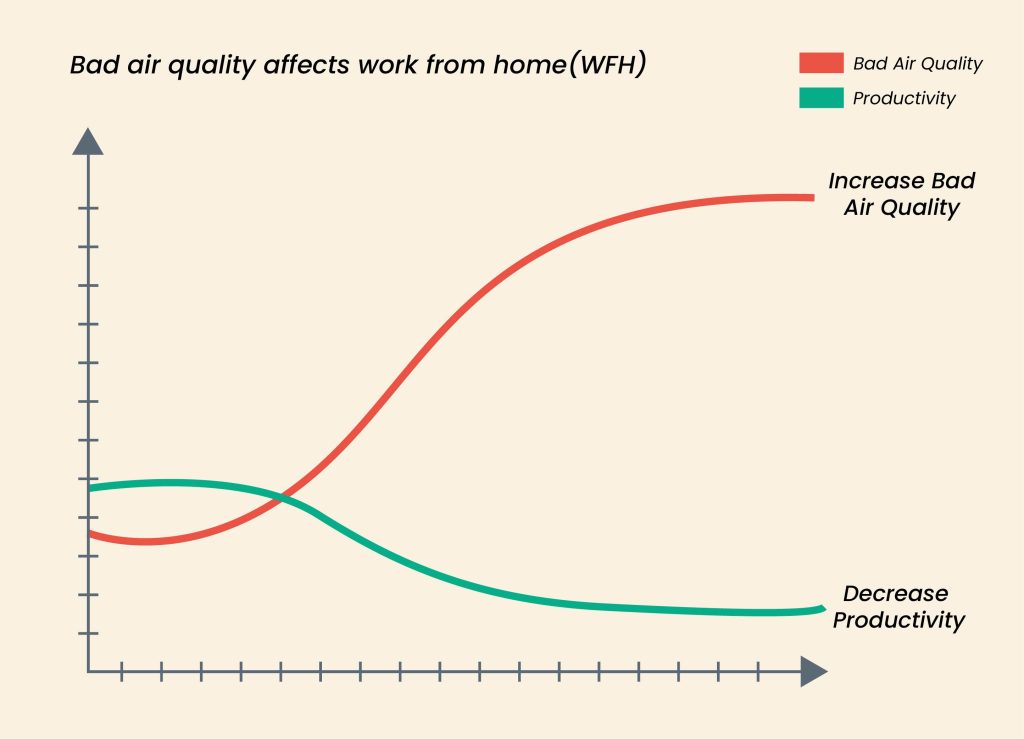
It is an inverse relation: As the air pollution levels increase, the productivity of employees decreases.
A study by Bjarne W. Olesen, International Center for Indoor Environment and Energy, Technical University of Denmark, has shown that poor indoor air quality causes sick-building
syndrome and that it reduces the productivity of office workers.
Air pollutants that affect work from home productivity
There are several air pollutants that can affect work from home, including:

- Particulate matter: It is a suspended combination of liquid and solid particles in the air. They can range from microscopic particles to visible particles such as smoke, soot, liquid particles, and dust.
Sources:
- Cooking
- Cleaning products
- Smoking
- Furniture and building material
- Candle and incense burning
- Pets
- Mold and mildew
- Heating and cooling systems

- Volatile Organic Compounds (VOCs): VOCs are extremely dangerous since they evaporate at ambient temperature. They are released by a number of unknown sources.
Sources:
- Cigarette Smoke
- Paints and solvents
- Cleaning agents
- Solvents and adhesives
- Air fresheners
- Fuels
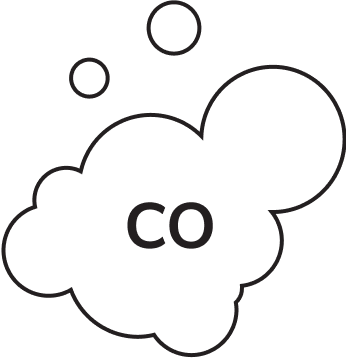
- Carbon monoxide (CO): Carbon monoxide is a toxic gas. When these levels rise indoors, a variety of health risks occur.
Source: Improper use of fuel burning appliances such as furnaces, stove, fireplaces, etc.

- Radon: Radon harms the lung cells. Radon exposure causes lung cell damage. Further damages can lead to development of cancer.
Source: Radon can seep through cracks on the ground level floor and walls.
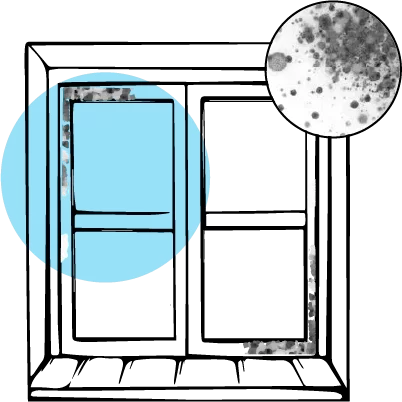
- Mold: Growth of mold and mildew depends on the humidity levels of the room. Highly humid room is highly susceptible to mold growth.
Sources: Highly humid and moist walls are more likely to develop harmful mold. One of the examples includes black mold, which is highly dangerous if inhaled directly.

Bad air quality effects on a WFH employee
Bad indoor and outdoor air quality can have a severe influence on the health and productivity of people who work from home. Poor indoor air quality can cause a range of health difficulties, including headaches, exhaustion, and respiratory disorders, making it difficult for employees to focus and be productive. Long-term exposure to poor indoor air quality can also result in more significant health issues like heart disease and cancer.
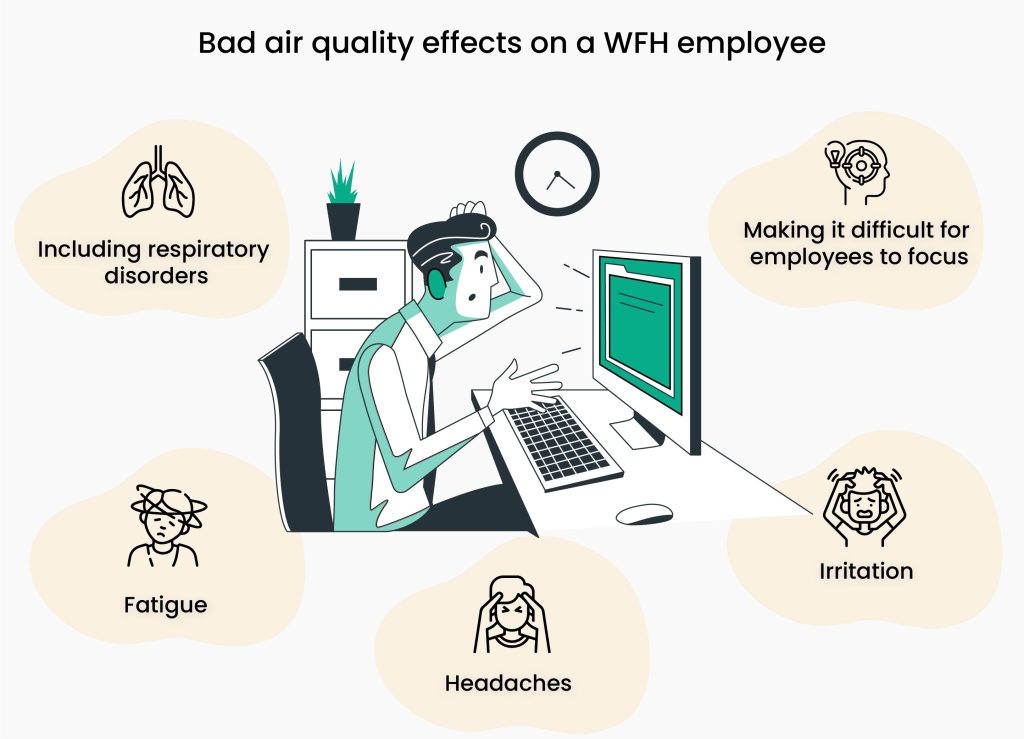
- Working from home increases the risk of indoor air pollution exposure because people spend more time indoors, and the air inside the home may not be properly ventilated.
- Pollutants such as dust, mold, and volatile organic compounds (VOCs) from cleaning products, paints, and other home objects can accumulate due to a lack of sufficient ventilation.
- Furthermore, air conditioning and heating appliances increase air pollution levels indoors.
- Poor air quality can cause a range of health concerns, including respiratory disorders, headaches, fatigue, and irritation, making it difficult for employees to focus and be productive.
- According to studies, excessive levels of air pollution might cause a loss in cognitive function and an increase in absenteeism from work.
How to reduce bad air quality effects on employees?
Employees must be aware of the air quality in their homes and take actions to improve it.

1. Employees can enhance the air quality in their homes by opening windows to boost ventilation, and utilizing air purifiers or fresh air machines.

2. Avoiding the use of devices that emit pollutants into the air to reduce the effects of poor air quality on work from home.
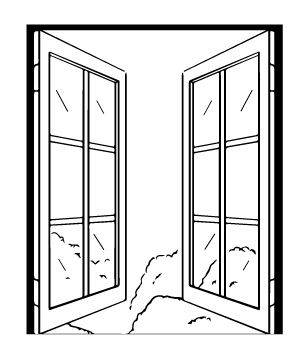
3. Opening windows for airflow, utilizing fresh air machine, and reducing the usage of cleaning agents are all good ideas.

4. Employers can also provide resources and information to help employees improve their indoor air quality.

5. Employers should encourage their employees to take breaks and get fresh air.
Also read:

